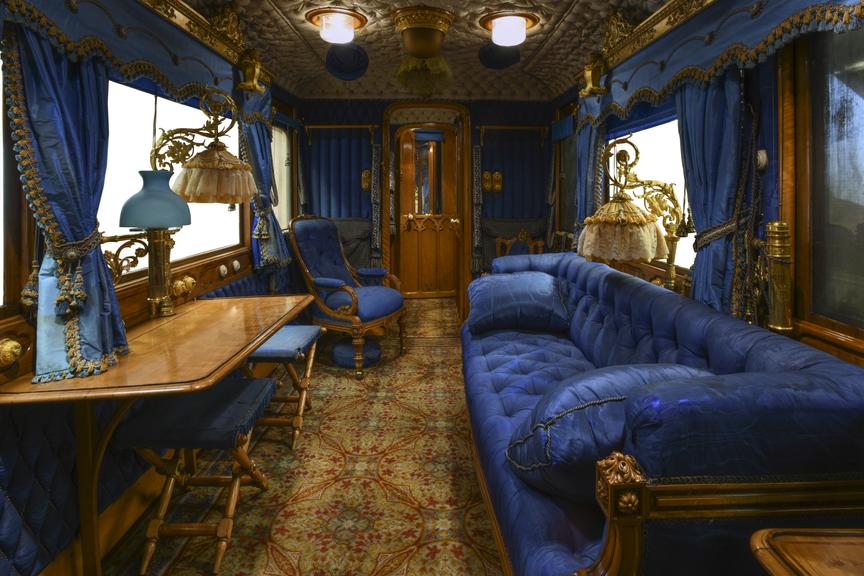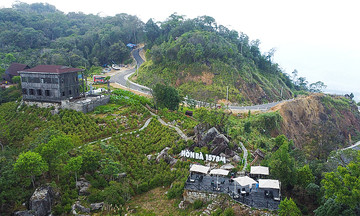Since the 1840s, Queen Victoria was the first British monarch to travel by private train. After more than 180 years, King Charles III is expected to end this long-standing tradition in 3/2027.
The distinctive claret-colored royal train will be decommissioned to save money. Royal family members will travel by helicopter or commercial train for domestic engagements.
Sir James Chalmers, Keeper of the Privy Purse, said that parting with the train is "sad," but the Royal Family "can't hold on to everything." He acknowledged that the royal train has long been a familiar part of Britain, cared for and cherished through generations.
News of the train's impending retirement has saddened many residents of Wolverton, Buckinghamshire, the world's first railway town. Since 1842, Wolverton has been the construction and maintenance site for the royal carriages.
"Everyone in Wolverton is proud to have had a family member who worked on the royal train," said Philip Marsh, railway expert and author of books on Wolverton.
Andrea Rossi, head of DB Cargo UK, which has operated the train for 30 years, said the news is sad for the entire railway industry. Each royal train journey is special. The train drivers are always proud to operate the most prestigious train in Britain.
No longer as luxurious as in Queen Victoria's time, the current train, built in the 1970s, has a simple interior, resembling a business hotel. The equipment is outdated and has been used infrequently in recent years.
 |
The interior of the British royal train during Queen Victoria's reign. Photo: The Board of Trustees of the Science Museum |
The interior of the British royal train during Queen Victoria's reign. Photo: The Board of Trustees of the Science Museum
In 1997, the British royal family considered retiring the train, but Queen Elizabeth II continued to use it for major celebrations. Most recently, in 2020, Prince William and Princess Kate traveled over 2,000 km on the train to thank frontline Covid-19 workers. The train also made numerous appearances with famous steam locomotives, drawing large crowds.
When Queen Elizabeth II died in 2022, many hoped the train would carry her coffin to London, but this plan was canceled for security reasons.
The train is old, and a complete upgrade to modern standards could cost tens of millions of USD. Building a new one would be even more expensive, especially with the royal budget already stretched by the 500 million USD Buckingham Palace renovation.
Many were surprised that King Charles, known for his environmental advocacy, chose to replace the royal train with helicopters, which have higher emissions. This decision is also controversial as it coincides with Britain's preparations to celebrate 200 years of public railways.
According to the Royal Household's 2024-2025 financial report, the figures show the train is no longer cost-effective. In 2024-2025, the train made only two trips, costing over 105,000 USD. Meanwhile, the Royal Family used 55 private flights and 141 helicopter trips, bringing the total travel expenses last year to 6.4 million USD, an increase of nearly 700,000 USD compared to the previous year.
Other royal families have also abandoned their private trains, including Japan, Sweden, and the Netherlands. Currently, only Denmark and Norway retain royal carriages, but they are rarely used.
The first dedicated royal carriage was built in 1842 for Queen Adelaide. Queen Victoria made the train a fixture of royal life, enabling her to travel throughout Britain and meet her people. The train was constantly at the forefront of technology, from electric lights and toilets to radios, telephones, bedrooms, and bathtubs.
"Innovations on the royal train were later adopted for public passenger trains," Marsh said, adding that the train provided both security and a comfortable space for royal family members to work, rest, and arrive at their destinations in the best possible condition.
Before its retirement, the British royal train is expected to make a farewell tour around the country for the public to admire. Many old carriages are already on display at the National Railway Museum in York.
"I hope they will be preserved and displayed properly, rather than being dismantled," Marsh said.
Bich Phuong (CNN)












